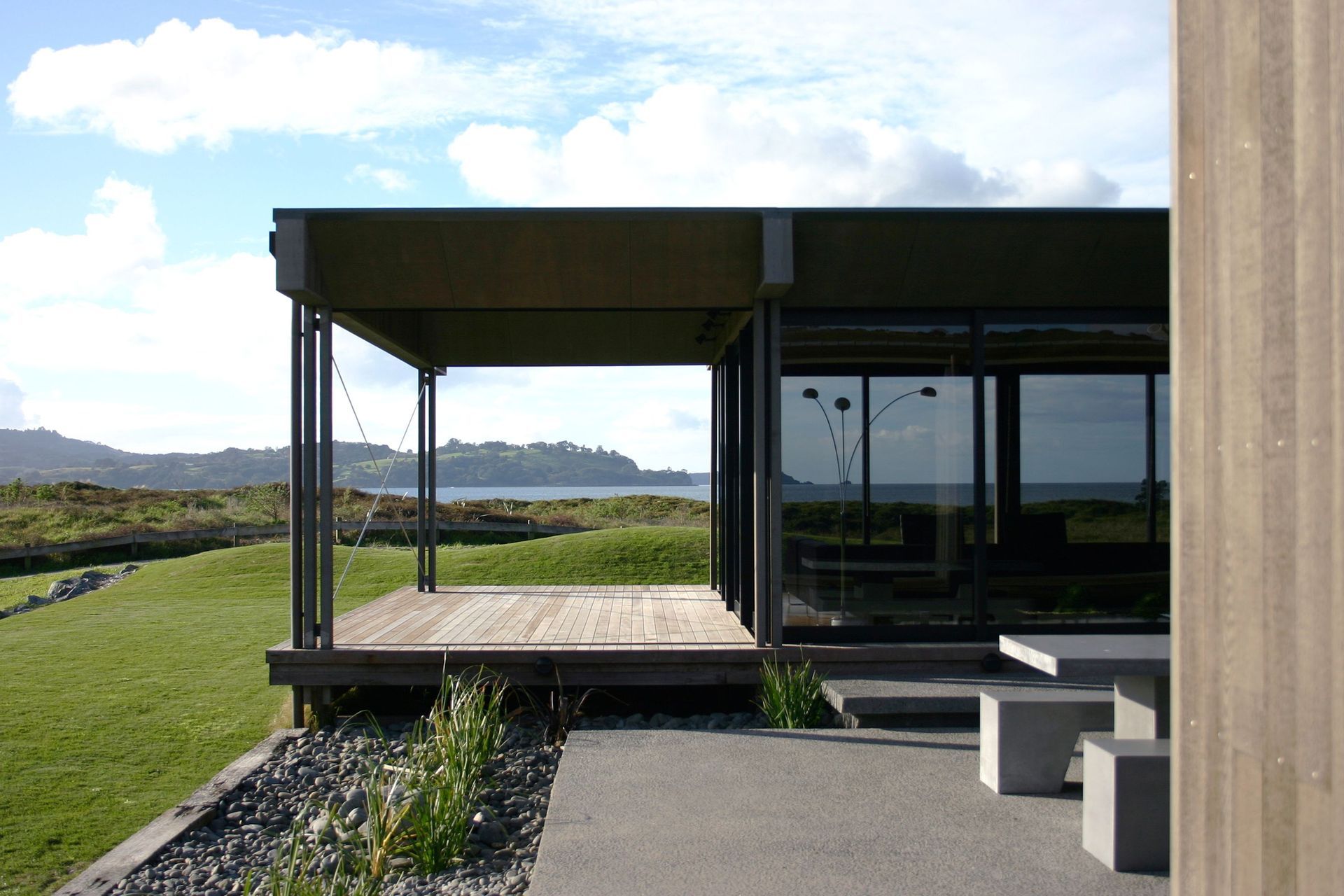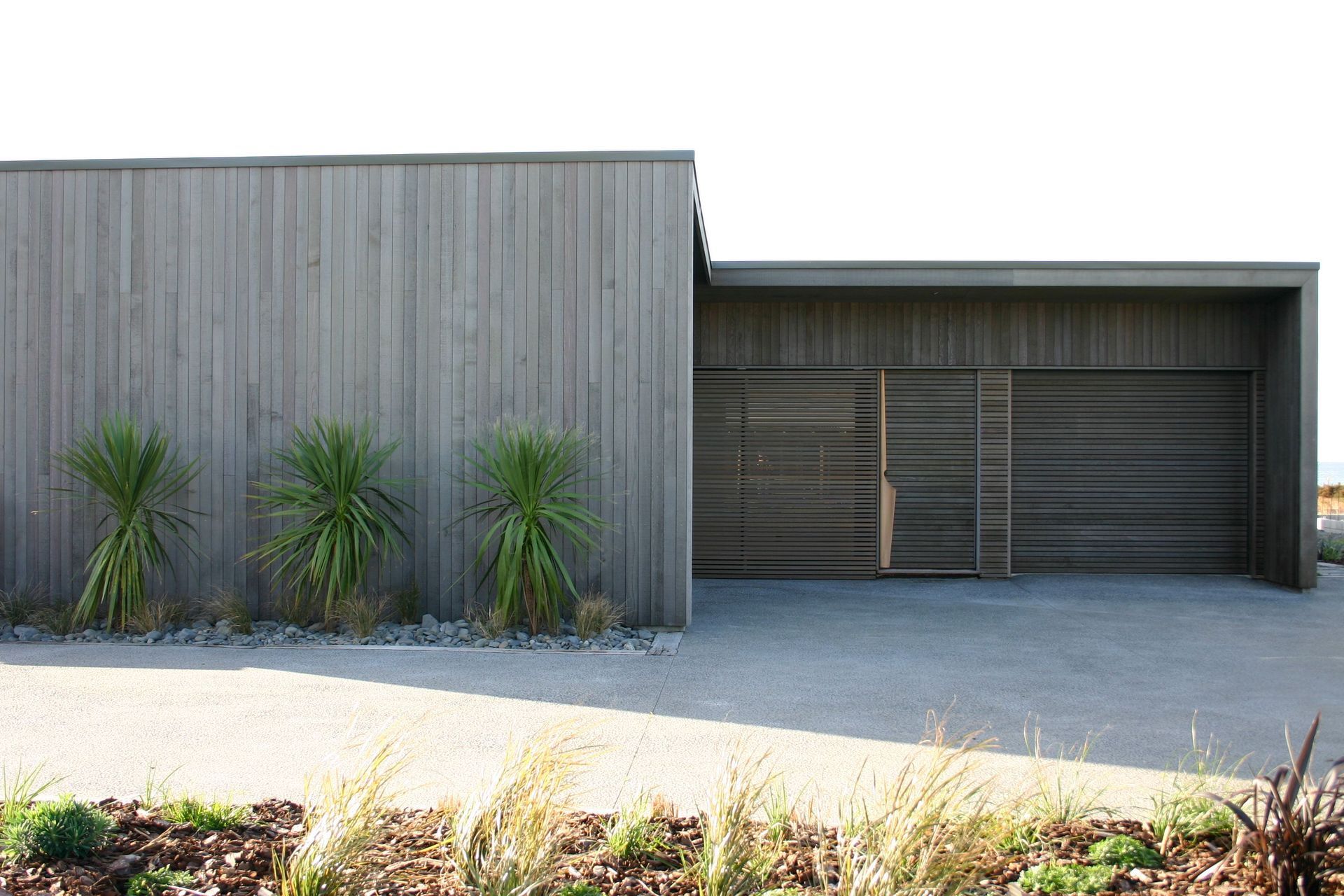From the beaches of Oahu to Aotearoa: the rise of oiled cedar
Written by
20 August 2019
•
5 min read

Vertical cedar cladding has quickly become a coveted choice for homes around the country. We had a chat to three men who are behind its swift integration into the Kiwi vernacular; architect Daniel Marshall, Ray Hutton of Rosenfeld Kidson and Jon Pearson of Dryden.

As a young architect, Daniel Marshall wandered along the beaches of Oahu’s north shore where his father lived and took in the local vernacular. Here, the extremes of salty air seemed to destroy almost all building materials, with Western Red Cedar the only cladding that survived. “Years later as a practicing architect, I had my first opportunity to design a beachfront home,” Daniel says.
That was some 16 years ago, and the house - on the banks of Omaha beach - still stands. “Cedar was an obvious choice for that project, given my Hawaiian observations, and conceptually we really wanted to push the idea of creating a house sculptured out of wood. To do this, we completely avoided using any steel structure or alternative cladding other than timber.”
The Omaha house was the beginning of a two-decade long collaboration between three key players in New Zealand; architect Daniel Marshall, Ray Hutton of Rosenfeld Kidson and Jon Pearson of Dryden. Together, the trio pushed the boundaries and forged the beginning of what is now a coveted cladding option for our coastal environment: Western Red Cedar.
For Ray, cedar cladding has been a lifelong passion, and it’s Ray who has worked tirelessly over the years developing acceptable alternative solutions for vertical shiplap cedar cladding that are recognised as a compliant alternative to Building Code solutions. For Ray, like Daniel, the inspiration came from overseas, but in this case Europe rather than the Hawaiian islands.
Prior to the late 1990s, Western Red Cedar had not featured widely in New Zealand architectural houses, but thanks to the development of a range of innovative solutions for cedar cladding, its use has increased quickly and significantly, with it now being the cladding of choice for many architecturally designed homes.
However, the technical elements of the Western Red Cedar cladding systems are one part of a combined effort. In order to ensure their durability and a coveted range of ever-developing hues, the partnership between Dryden, Rosenfeld Kidson and architect Daniel Marshall blossomed.
“Creating innovative technical solutions is one thing; ensuring the ultimate durability and aesthetic variations is another. That’s where Dryden and Jon Pearson come into the mix. What they have achieved has allowed for unparalleled stability and durability with our systems, creating a benchmark for the lifespan of cedar cladding in our harsh climatic conditions,” Ray says.
“What we’re always aiming to achieve is an improved aesthetic in conjunction with a technically excellent solution. What we needed was a timber that could outperform as a cladding solution and retain its aesthetic qualities for longer than its counterparts.”

The use of Dryden WoodOil meant projects such as the Omaha house designed by Daniel Marshall can stand the test of time, and there is a range of unique and customisable colours and finishes.
“The Omaha house was oiled with Dryden WoodOil in a colour known as slate, which created the look of pre-weathered cedar we were after. The oiled finish, with occasional reapplication has continued to patina beautifully and protect the cladding from the ravages of the ocean. The house looks better now than the day it was built,” Daniel says.
Dryden WoodOil is a non-filming oil that penetrates the wood rather than sitting on the surface as other oils or stains do, Ray says. “Because it’s a migrating oil, it is drawn into the timber protecting the timber from water, UV exposure and temperature extremes. This allows the cladding to remain durable and stable over time, and last for decades in our harsh climatic conditions. Together with the clever details of the cladding system, Dryden WoodOil offers an innovation solution that cannot be created with any other product currently available in New Zealand,” Ray says.
“Dryden WoodOils are playful products in terms of the creativity behind their extensive colour range, yet they are incredibly clever in make up, enhancing the look and feel of the wood. It’s imperative that the first coat of WoodOil is factory applied to ensure every part of the timber is penetrated. The second coat is then applied directly before practical completion of the house, and depending on the environmental context of the building, every few years after that.” Dryden has a national network of contractors who work with homeowners to ensure their homes are maintained over the years and extend the life of the product. “This is an essential offering that gives homeowners confidence that their investment will stand the test of time,” Ray says.
This year, Dryden WoodOil celebrates its 20th year in operation in New Zealand.
If you’re considering using Western Red Cedar cladding, make sure you visit Rosenfeld Kidson and Dryden on ArchiPro to find out more about the vast possibilities of this innovative combination of products, designed specifically for New Zealand conditions.
